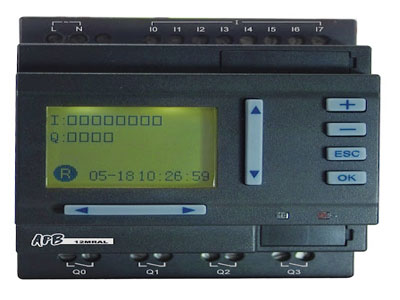What Are The Most Popular PLC Programming Languages?
Key Takeaway
The most popular PLC programming languages are Ladder Logic, Function Block Diagram (FBD), Structured Text (ST), Instruction List (IL), and Sequential Function Chart (SFC). Ladder Logic resembles electrical relay logic diagrams, making it easy for electricians to understand. FBD uses graphical blocks to represent functions, ideal for complex processes. ST is a high-level language similar to Pascal, suitable for advanced algorithms. IL is a low-level language resembling assembly code, efficient for simple, repetitive tasks. SFC is a graphical language for depicting sequential processes, excellent for step-by-step control. These languages cater to different needs and expertise levels in industrial automation.
Ladder Logic
Ladder Logic is the most traditional and widely used PLC programming language, primarily because of its simplicity and resemblance to electrical circuit diagrams. It’s visually intuitive, which allows even those with basic electrical knowledge to understand and implement control logic effectively. This language uses symbols such as contacts and coils, making it ideal for simple on/off control schemes prevalent in manufacturing processes. Ladder Logic’s ease of use and straightforward troubleshooting capabilities make it a favorite among beginners and seasoned engineers alike, ensuring quick deployment and maintenance of industrial control systems.

Structured Text
Structured Text stands out among PLC programming languages for its resemblance to popular high-level languages like Pascal or C, granting engineers a familiar environment with enhanced capabilities. Its flexibility surpasses that of Ladder Logic, allowing for intricate mathematical operations, data manipulation, and algorithmic programming. This versatility makes it a prime choice for applications necessitating advanced control algorithms and complex calculations.
Unlike Ladder Logic, which excels in simple sequential control, Structured Text shines in scenarios demanding more sophisticated logic and extensive data processing. Engineers adept in Structured Text can implement intricate control strategies with ease, thanks to its powerful programming constructs and support for complex operations.
Moreover, Structured Text fosters code reusability and maintainability, enabling engineers to create modular and scalable programs. By leveraging libraries and functions, developers can streamline development efforts and ensure code consistency across projects. Overall, Structured Text empowers engineers to tackle challenging automation tasks with precision and efficiency, making it an indispensable tool in the arsenal of PLC programmers.
Function Block Diagram
Function Block Diagram (FBD) is a dynamic graphical programming language employed in PLCs, presenting control logic through interconnected blocks, each assigned specific functions. This visual representation combines the simplicity of Ladder Logic with the flexibility of Structured Text, catering to various industrial applications, notably in process control and motion control systems.
FBD’s appeal lies in its intuitive visual representation, which simplifies complex control algorithms into easily comprehensible diagrams. Engineers can construct control strategies by linking function blocks, each representing a specific operation or condition. This approach enhances readability and facilitates rapid development, especially for intricate control systems requiring extensive logic.
Furthermore, FBD’s modular nature promotes code reusability and maintainability. By encapsulating frequently used functions or control routines within reusable function blocks, engineers can streamline development efforts and ensure consistency across projects. This modularity also facilitates troubleshooting and debugging, as engineers can isolate and test individual blocks independently.
Overall, Function Block Diagram offers a versatile and user-friendly approach to PLC programming, empowering engineers to efficiently design and implement sophisticated control strategies for diverse industrial automation applications.
Sequential Function Chart
Sequential Function Chart (SFC) serves as a powerful graphical programming language within the realm of PLCs, aiding in the representation of intricate processes through a series of interconnected steps or states. This methodical approach is particularly beneficial for applications necessitating sequential control, state-based logic, and complex process sequences.
SFC’s visual representation offers clarity and comprehensibility, enabling engineers to grasp the system’s operation at a glance. By breaking down processes into manageable steps and illustrating the transitions between states, SFC facilitates understanding and troubleshooting, thereby expediting the development and maintenance of control systems.
Moreover, SFC promotes modularity and reusability by encapsulating specific functionalities within individual steps or states. This modular design enhances the flexibility and scalability of control strategies, allowing for efficient adaptation to changing operational requirements and facilitating future expansions or modifications.
In essence, Sequential Function Chart empowers engineers to design and implement sophisticated control strategies with precision and efficiency, ensuring optimal performance and reliability in diverse industrial automation applications.
Instruction List
Instruction List (IL) represents a fundamental programming language utilized in PLCs, akin to assembly language, wherein a sequence of mnemonic instructions dictates the PLC’s operations. While it may lack the visual intuitiveness of graphical languages like Ladder Logic or Function Block Diagram, IL offers unparalleled precision and control over PLC functionalities.
Engineers often resort to IL for applications demanding high performance or when optimizing code efficiency is paramount. Despite its complexity, IL provides a robust framework for implementing intricate control algorithms and managing critical processes with utmost accuracy.
Although mastering IL may require a steeper learning curve compared to graphical programming languages, its advantages in terms of performance optimization and precise control make it indispensable in certain industrial settings. With IL, engineers can finely tune PLC operations to meet stringent performance requirements, ensuring the reliability and efficiency of automation systems in diverse industrial applications.
Conclusion
Selecting the most suitable PLC programming language depends on various factors, including the complexity of the application, the experience of the programming team, and the requirements of the project. Each language has its strengths and weaknesses, and understanding their capabilities is essential for making informed decisions. By evaluating the specific needs and objectives of the project, engineers can choose the most appropriate programming language to ensure efficient development, reliable operation, and easy maintenance of PLC-based automation systems.
